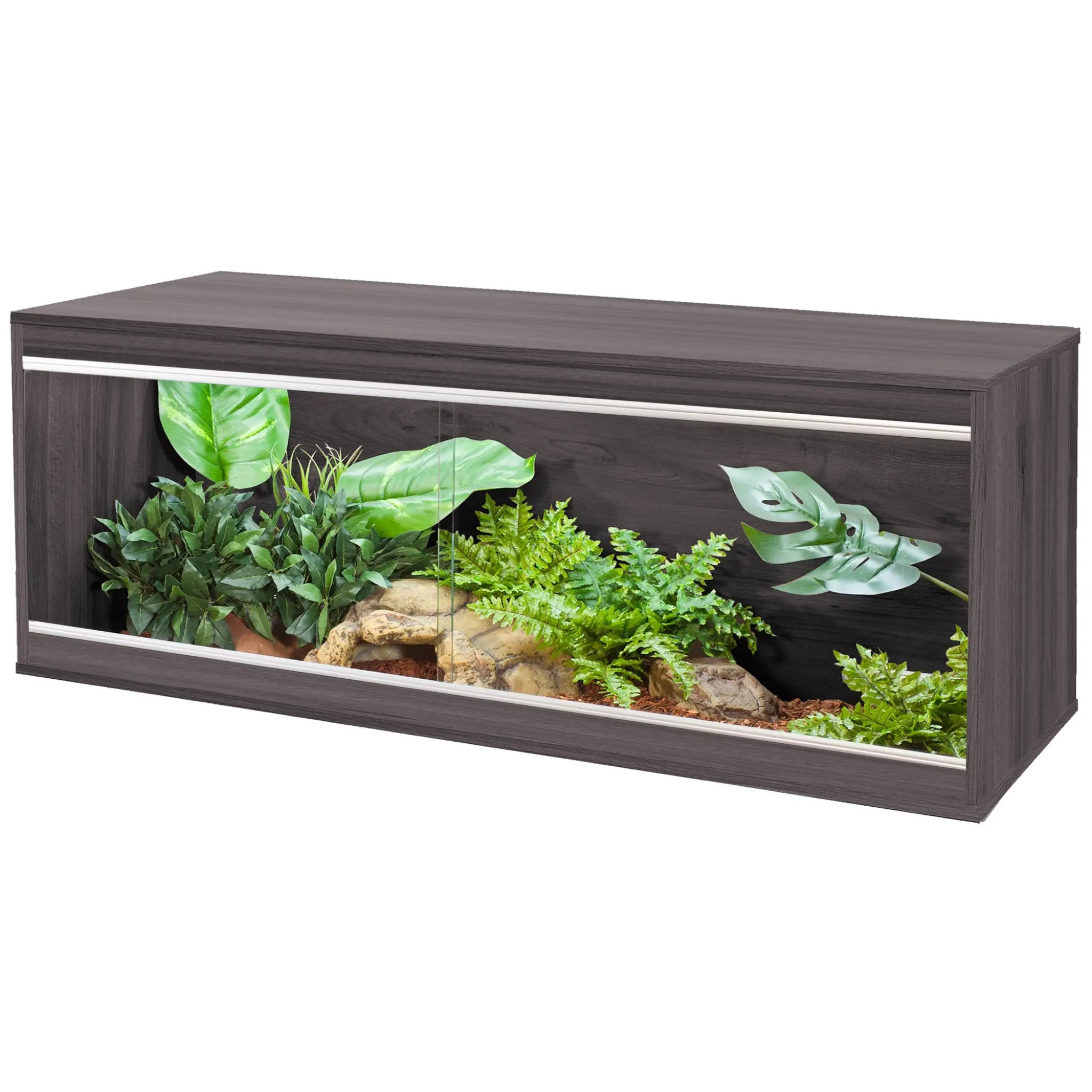Free Delivery
On order over £99*



Housing: a glass terrarium of at least 600x450x300mm

Heating: ambient air temperature of 75oF

Diet: carnivorous diet of insects and meat

Decoration: damp substrate to raise humidity levels

African bullfrogs do well with a glass terrarium as their enclosure. This is because glass is great at allowing heat to escape ensuring that the enclosure stays cool enough. Other enclosures such as wooden vivariums are far too efficient at retaining heat.
The African bullfrog's vivarium should be at least 600mm in length and 300mm in height. The African bullfrog is going to grow to around 9" so they need a space large enough for them to move around in.
African bullfrogs require a near constant air temperature of 75oF. This is best achieved by sticking a heatmat on one side of the glass enclosure. This heatmat is regulated using a thermostat to make sure the temperature stays constant.
As the glass is only being heated on one side this also creates a small temperature gradient within the enclosure allowing the frog to warm itself up or move away to cool down.
If the enclosure is not able to get up to temperature with the heat mat alone a small basking bulb may be implemented in the canopy as long as the temperatures do not exceed 75-80oF.
African bullfrogs are terrestrial frogs but still need to be kept moist. The best way of doing this is by lining the floor with a mixture of bark chips and damp moss, the substrate can be taken out and resoaked or replaced as necessary.
The frogs vivarium can be decorated with artificial plants for a more natural look. Natural wood ornaments look very effective and also provide further perches for the frogs. Trailing plants are very good at disguising electrical wires and equipment, as well as providing cover for young amphibians.
African bullfrogs are carnivorous and have a diet consisting of mainly livefoods. The core of the livefood diet should be high in protien and relatively easy to digest. We have found that brown crickets are the most readily accepted, but you can also use black crickets or locusts (hoppers). On occasion, for variation you can offer other bugs such as mealworms, waxworms or calciworms.
African bullfrogs can also be fed small 'pinky' mice or earthworms once a week to add a bit more protein to their diet.
To provide the African bullfrog with optimal nutrition and to keep them in the best of health, they will require diet supplementation in the form of calcium, vitamins and minerals. These are most commonly available as powders
Any livefood for the frog should be 'gut-loaded' with an insect food. This basically involves feeding the livefood a nutrient rich diet before they are fed to the African bullfrog. Our livefood is delivered to you already gut-loaded but this should be continued at home.
Sign up to the Reptile Centre newsletter so you don't miss out on all the latest offers and guides to give your pet the best they deserve






